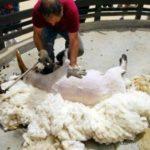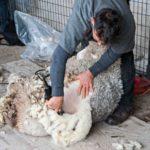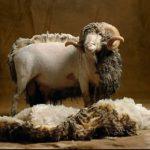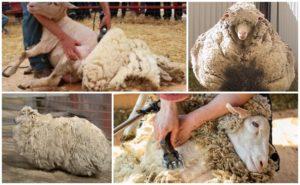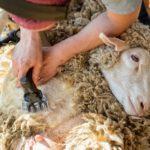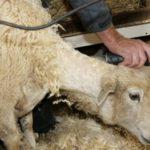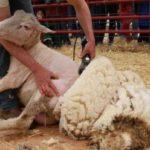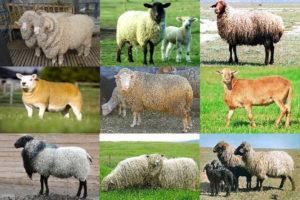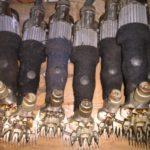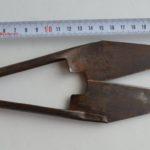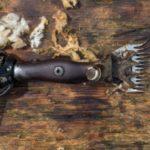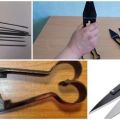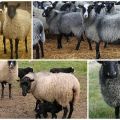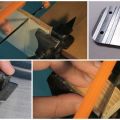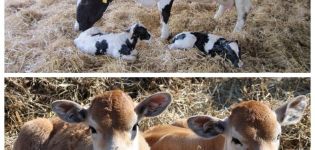When and how to shear sheep, step by step instructions and what to use
It is important for farmers and small herd owners to know when rams and sheep are sheared. These animals are usually raised for juicy and tasty meat. Any beef breed has wool. For hygienic purposes, it must be cut in early spring and late summer. This is done to increase the productivity of animals and protect them from parasites and infection. Fine-fleece rams with fine fine wool are trimmed only once a year (in spring).
When are the sheep sheared?
As a rule, small farmers raise sheep for meat, less often for wool. Regardless of the breed, these animals should be sheared at least once a year. Shearing is a mandatory hygiene procedure for beef sheep. If the animals are not trimmed, they will suffer from heat, poorly recover, and their coat will turn into a breeding ground for parasites and infection.
The trimmed fleece is sold through markets, private procurement companies and points, or via the Internet. The purveyors often buy unwashed sheep wool during the shearing season, that is, from spring to early autumn. The price of the rune depends on the breed of sheep. The fine wool of merino animals is most appreciated. It is used in the knitwear and costume industries.
Semi-fine wool is used for the production of blankets, yarn, and coat fabrics. This is also a valuable product. The cheapest is wool of coarse-haired, that is, meat, breeds.
Sheep are usually sheared in spring. For the winter, the animals' hair is left so that they do not freeze from the cold. The timing of haircuts depends not only on the season and climate of a particular region, but also on the breed, age and length of the coat. Each owner independently chooses the month and day when he needs to mow his flock.
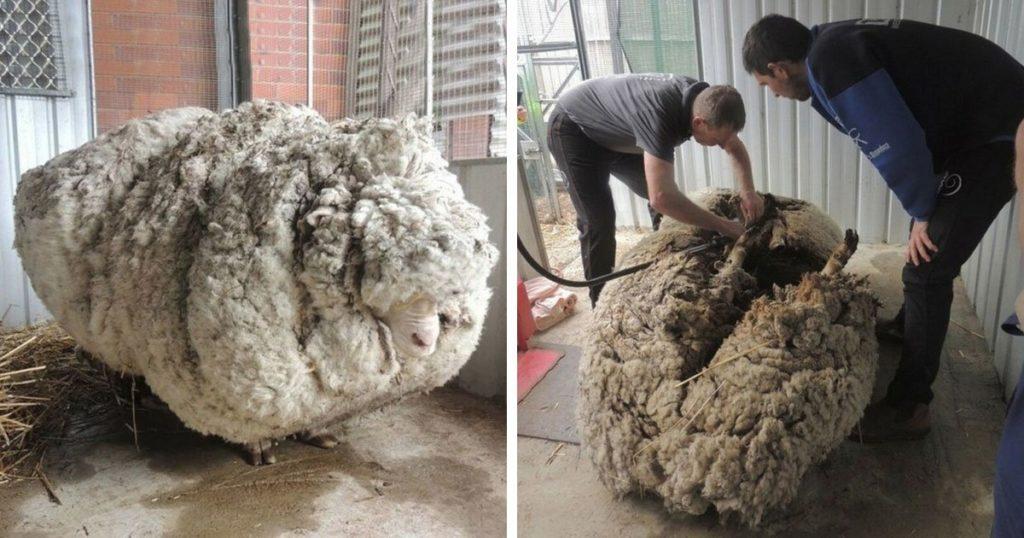
Timing of cutting different breeds:
- fine-woolen or semi-fine-wooled ones are cut once a year (in spring), if the hair length is at least 4-5 cm, and the age of the animals is at least one year;
- fine-wooled and semi-fine-wooled breeds do not have seasonal molt, they are allowed to be cut at any period, but it is better closer to summer, when grease accumulates in the fleece, and the wool shrinks soft;
- coarse-haired and semi-coarse-haired rams are trimmed in the spring, at the moment of the beginning of molting, when the wool is "teased" (begins to fall off);
- lambs with coarse and semi-coarse wool are allowed to shear at 4-5 months of age;
- before the summer months, all representatives of coarse-haired meat breeds must be trimmed, otherwise they will suffer from the heat, recover poorly and grow;
- Since coarse-haired meat breeds grow wool quickly, they can be cut at the end of summer so that the coat can grow again before the onset of frost.
When choosing a date, haircuts take into account the climatic characteristics of their region. In the southern latitudes, animals can be mowed in March. In the middle lane, in the Urals, it is better to postpone the haircut schedule to April-May. In the northern latitudes, sheep and sheep are sheared not earlier than June, just before they go out to the pasture. True, this applies only to fine-wool or semi-fine-wool breeds. Coarse-haired meat sheep should be sheared just before molt.
Before starting the procedure, pay attention to the condition of the coat and the amount of grease. After winter, the fleece of rams is usually dry and tough. Such wool is difficult to cut, it comes off badly and breaks. It is better to wait until a certain amount of grease has accumulated in the rune, it will become soft and elastic, it will not tear when cutting.
Required tools
It is recommended to buy special tools for haircuts. Animals are sheared with special scissors or using an electric clipper. Tools can be purchased online (at specialty stores). Sheep shearing shears (double in shape) must be at least 27 cm long. The blades are made of strong steel. Such a tool costs about 5-20 dollars. It takes about 30-60 minutes to shear one sheep with scissors.
You can buy a manual electric typewriter. It is similar to the tool commonly used by hairdressers. With its help, the animal can be trimmed in 10-30 minutes. The machine costs from $ 100 to $ 300. The price depends on the power of the device. The smaller the herd, the easier it is to choose a machine. This tool allows you to quickly and efficiently cut the coat. True, you need to use the machine carefully so as not to catch the protruding parts of the animal's body.

Haircut methods
Sheep are sheared by machine and by hand. Each method has its own advantages and disadvantages. The easiest way to shear the sheep by hand is with scissors or a clipper.
Manual
Owners of small herds can shear their rams using special shears. The main thing is that the tool is well sharpened. The wool is also shaved with electric hand-held machines. With the manual method, you will have to sweat a little. Shearing animals requires physical strength and dexterity. Unaccustomed beginner alone will not be able to cut a ram. The animal will struggle and behave uneasily. It is recommended to call someone for help.
Machine room
Clipping with an electric clipper makes the shearer's work easier and improves the quality of the wool. This method allows you to cut the fleece closer to the skin and make it smoother. There are special machines for individual use on sale. These tools are easy to use. The main thing is to remember that when cutting, you cannot go through the same place 2 times.
In the industrial cultivation of sheep, carousel and conveyor installations are used. Shearing of animals with electrical equipment usually takes place in special rooms with the help of well-trained shearers, which can shear several dozen sheep in an hour.
Consideration of animal vulnerability
Sheep and rams of any breed tolerate a machine shearing performed by a professional shearer. A quality procedure is a minimum number of long passes with a machine. Well-fed sheep of beef breeds with dense, even, rough skin tolerate the procedure more easily and are less likely to get injured. It is much easier to cut them. Thin animals with folded skin are problematic. Fine-fleece rams are the hardest to trim. They have many folds in their skin and horns.
Such animals are sheared slowly, they use the machine carefully, and the stripes are made short.
Haircut rules and technique
Sheep may be sheared at home, for example, outdoors or indoors, on the ground, floor or table. Before shearing, the animals are not fed for 24 hours and are not watered for 12 hours. Only dry hair is cut. It is advisable to dry the animals grazing in the meadow indoors before cutting.

Step-by-step instructions for shearing sheep (rams) with a machine:
- The animal is placed on its left side with its back to itself.
- It is forbidden to rest your foot on the belly of a sheep, turn it over the back.
- The tangles are neatly cut with scissors.
- The trimming begins from the area near the udder, tail, legs.
- The first long strip is cut on the belly (upward from groin to chest).
- You need to cut along the body, carefully, not allowing cuts to the skin.
- The belly and chest are completely freed from fur.
- The fleece should come off the skin in a whole (continuous) piece.
- Turn the sheep over to its right side.
- Long longitudinal strokes are used to cut the coat on the left side of the body.
- Turn the sheep over on its left side again.
- The fleece is removed (longitudinal moves) from the right side of the body.
- Hair is trimmed from the back, neck and head.
It is recommended to cover the place where the procedure will take place with a tarpaulin or film, oilcloth so that the wool does not get dirty. The quality of the rune depends on the skill of the shearer. The main thing is not to reduce the length of the coat when cutting. This is especially important for fine wool breeds, the value of which depends on the length of the hair.
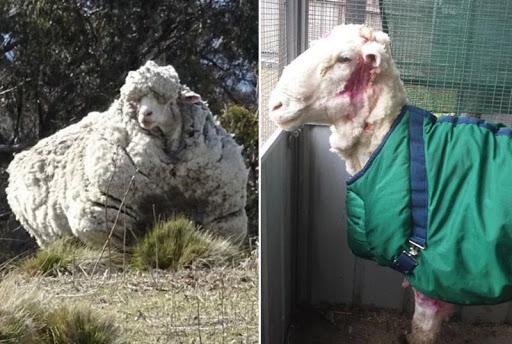
How to store wool?
It is recommended to dry the cut fleece in a dry, closed room, clean it from dirt and plant residues, and then roll it into a roller. It is advisable not to wash, wet, or comb the wool. Procurers buy exactly unwashed and untreated fleece. You can store it in plastic bags.
Care and treatment of instruments
After cutting, scissors and electric clippers are recommended to remove hair residues with a soft brush. It is forbidden to wash tools in water. The scissors cleaned with a rag can be sharpened for the next time. It is recommended to wipe the machine with a dry cloth and lubricate the mechanisms with machine oil. The cutting knives can be replaced if necessary. You need to store tools in cases or factory boxes.
Diy cutting table
If you wish, you can make your own table for grooming animals. They make it from wooden materials. Height - 0.5-1 meter. The width of the table top is 100-150 cm, the length is 150-170 cm. To make the table, in addition to boards and beams, you need nails, screws, a hammer, a screwdriver, corners, glue.
What do the experts advise?
It is advisable to cut animals in spring or summer. The quality of shearing is influenced by the fatness of rams and sheep. Well-fed animals have an almost flat body surface and very dense skin, and grease makes the fleece also elastic. When clipping well-fed individuals, the wool does not break or break. The machine glides easily over the surface and cuts the fleece well.
Shearing thin sheep is harder. Their body surface is uneven, the hair is loose. On the rune, such animals have little grease. Their coat is dry and hard, it is difficult to shear. Frequent skin cuts are possible. The fleece turns out to be of poor quality and crumbly. It is recommended to fatten the animals a month before shearing. Sheep quickly recover on grain (oats, corn, barley), sunflower meal and cake, boiled potatoes, vegetables.
